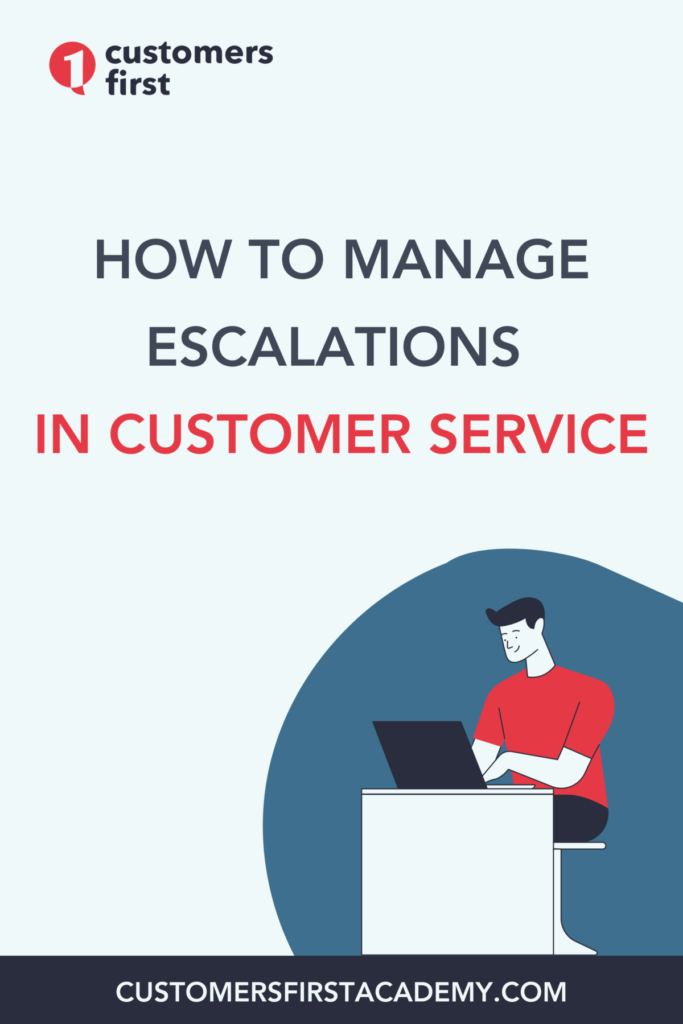The Guide to Escalation Management in Customer Service
No one wants escalations. The company owner despises them, the manager detests them, and the customer-facing professional dreads them. And yet they happen.
Escalations are unpleasant, but a normal part of business and customer service. While accepting them is one thing, knowing what to do when an escalation does occur is another thing altogether. However, taking the right course of action will help you succeed in your role and assist your organization.

This is because when a customer gets unhappy these days, he doesn’t just call customer services but can also leave a detailed bad review on the company’s social media page. This can be very damaging for a business.
Properly managing escalations can mitigate most of this risk. Before we get into effective strategies to resolve escalations in customer service, let’s understand what escalation means.
What Does Escalation Mean?
The online Cambridge dictionary describes the word “Escalation” as “a situation in which something becomes greater or more serious”.
In the business setup, it means elevating a problem or a project to a higher level in the company.
For example, the customer support team discovers that the delivery and dispatch status of products is unavailable in the delivery management software due to a technical glitch. This is causing several complaints, so they “escalate” the problem to the IT Department for urgent resolution.
What Is Escalation In Customer Service?
When the term escalation is applied to customer services, it means that there is an issue that needs urgent resolution.
When a customer encounters a problem with a product or a service they are using, they contact customer services for support. If their issue is resolved, the customer is happy and moves on. However, if the complaint is not resolved and it’s causing the customer some degree of inconvenience, they might press the customer service agent and ask for intervention of higher-level support.

At such a stage, a problem can be called “escalated”. Therefore, an escalated complaint is a problem that has not been resolved in the time frame or the manner that the customer expected.
There are mainly two different types of escalations in customer services:
- Functional Escalation: This happens when the complaint is assigned to someone with more experience or technical expertise because the customer-facing professional may lack the knowledge to manage the problem on his own. The customer service professional may himself escalate the complaint. Functional escalation simply means transferring the problem to someone with the requisite skillset or knowledge to resolve it.
- Hierarchical Escalation: This type of escalation happens when a complaint or an issue moves up the hierarchy of command simply because it’s not getting resolved. The customer’s response can also dictate which issues get escalated and which don’t.

Causes for Escalations in Customer Services
Escalations requested by the customer naturally cause the customer-facing professional a fair degree of apprehension. But, before we get into some effective strategies to deal with escalated complaints, let’s understand why escalations happen in the first place.
Here are some of the reasons why normal complaints may turn into escalated ones:
- Delay: Every customer expects his problem to be resolved promptly. Any kind of delay, whether it is in the initial registration of the complaint to the actual resolution can result in the customer becoming unhappy. The cause for a delay may even be technical. Still, to the customer, a delay is a nuisance.
- Miscommunication with the customer service professional: Good communication can disarm even the angriest customer. However, even the slightest ambiguity from a customer service agent can turn an unhappy customer into an angry customer. Even though miscommunications are commonly responsible for escalations, they can be easily resolved with clear and effective communication. Fortunately, effective communication is a learned skill that can be acquired through proper training.
- Missed Service Level Agreement (SLA): The customer expects a certain level of service with any purchase. This expectation of service is known as service level agreement. If this expectation is not met it can result in a breach of the customer’s trust which can naturally lead to escalated complaints.
Strategies to Resolve Escalations with Examples
Whatever may be the cause, the customer service professionals have the power to resolve escalations. All it takes is a little intentionality and employing smart strategies to disarm the customer. Here are five effective strategies:

- Prevent Escalations: If you can’t solve the problem, move it along proactively to the appropriate person, who can. You may not be the right person for the problem for a variety of reasons like lack of experience or technical expertise. Don’t take it personally; it’s all about saving the customer’s time. After all, time is money.
- Listen: If you do think that you can help, the first order of business should be to listen. Active listening is a skill that can be easily cultivated. Let the customer describe their problem in their terms or even let them vent if required. If the customer feels dismissed by you, they can turn even more aggressive. For example, rather than saying “calm down”, say things like “I’m here to help, please tell me the problem” or “I’m listening, please go on.”
- Empathize: You have to let the customer know that you are taking the situation seriously. You can do this by letting the customer know that you care. To do this, empathy is the number one tool in any customer service professional’s arsenal. Use the customer’s language to mirror their feelings back to them. Say things like “I understand…”, “I can see how that must have inconvenienced you” or “you are right to feel frustrated, let me help”
- Understand The Problem: While you are trying to get the customer to talk, do understand the problem thoroughly. Asking relevant questions will make the customer think you’re working to help him. However, looking for too much unrelated information can leave the customer irritated. Understanding the problem thoroughly will also ensure that the problem resolution takes the most direct route and there are no delays.
- Be Honest: There are times when an intense situation can be resolved by direct honesty. By being transparent, you are appealing to their good senses. This empowers the customer, and sometimes that’s all that’s required to diffuse a heated situation. Level with your customer by saying things like “It’s a technical glitch on our end; we’re working hard to fix it.” Or “Yes, this should not have happened, I apologize for the inconvenience.”
Brief Summary:
- Escalations are an unwanted but unavoidable part of customer service.
- An escalated complaint is a regular complaint that was not resolved in a proper or timely manner leading to the customer getting aggravated.
- There are two different types of escalations: functional and hierarchical.
- Causes for escalations can be delays, miscommunications, or missed service level agreements.
5 strategies for resolving escalations: Prevent an escalation, listen, empathize, understand the problem, and be honest.
Other Resources:
CustomersFirst Academy offers comprehensive customer service training designed to help you grow your skills and advance your career.
To keep learning and developing your knowledge of customer service, we highly recommend the additional resources below:
Service Marketing 101: How It Works
How to Build an Award-Winning Support Team from Scratch
How to Succeed in a Customer Facing Role
Customer Focus: How to Put Your Customers First

